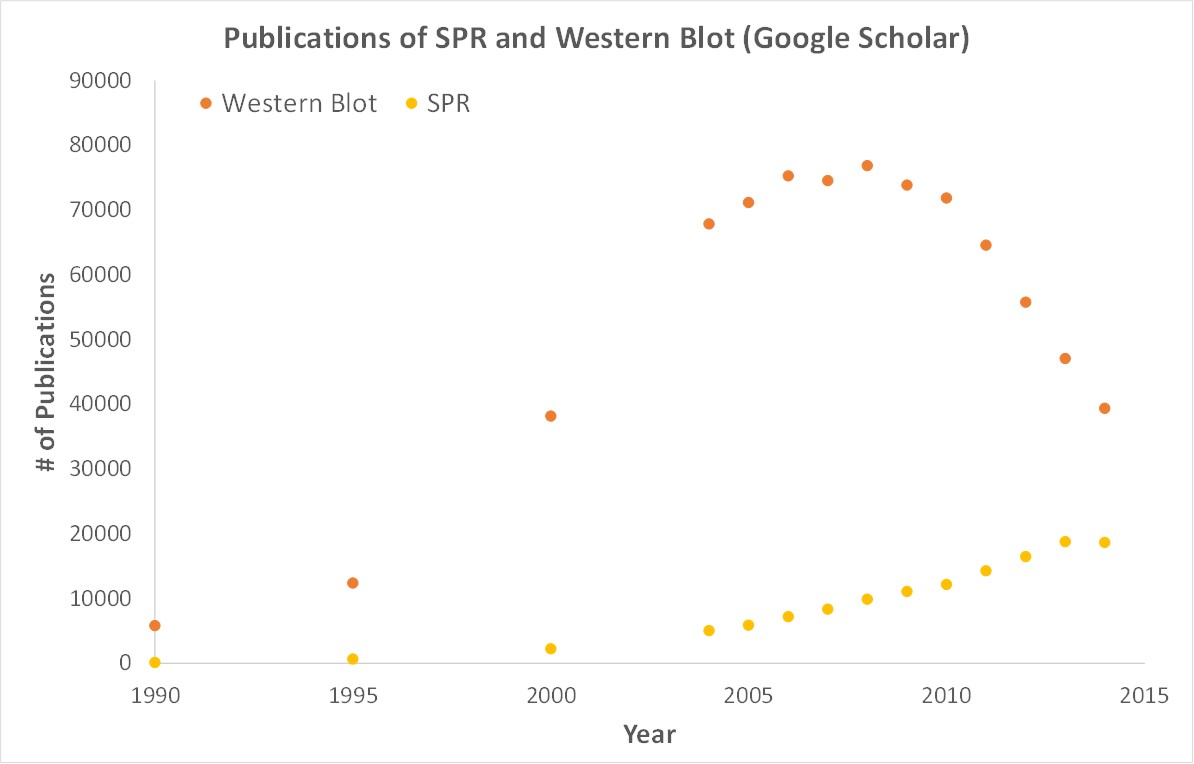White blood cells play a vital role in our immune system. To defend our bodies from diseases, a sufficient number of white blood cells are needed. Unfortunately, there are many different membrane-active toxins, including leukotoxin, that will target and induce white blood cell death. Dr. Angela C. Brown, a researcher at Lehigh University, uses OpenSPR’s localized surface plasmon resonance technology to provide her with the key binding data needed for her recent publication. “Receptor-Based Peptides for Inhibition of Leukotoxin Activity” uses binding data generated with OpenSPR to demonstrate the possibility of using target-based peptides to inhibit leukotoxin mediated cytotoxicity in human white blood cells.
About the Publication
Aggregatibacter actinomycetemcomitans is a gram-negative bacterium that causes localized aggressive periodontitis, an aggressive form of periodontal disease that occurs in adolescents [1]. This bacterium secretes a repeats-in-toxin (RTX) protein called leukotoxin (LtxA), which helps the bacterium evade the host immune response during infection [2]. LtxA is a membrane-active toxin that specifically targets white blood cells and is mediated by the presence of lymphocyte function-associated antigen-1 (LFA-1) integrin [1]. This study analyzes the inhibition of LtxA-LFA-1 binding by using target-based peptides as an antivirulence strategy to inhibit LtxA-mediated cytotoxicity. Results show that the target-based peptides corresponding to the reported LtxA binding domain on LFA-1, were found to inhibit LtxA binding to LFA-1 and therefore prevent LtxA-mediated cytotoxic activity in human immune cells. This publication demonstrates the possibility of using target-based peptides to inhibit LtxA-mediated cytotoxicity and other RTX toxins. The binding between target-based peptides to LtxA was studied using surface plasmon resonance.
Why was OpenSPR instrumental for this research?
Surface plasmon resonance (SPR) was used to determine the binding between five different target-based proteins to LtxA. The target-based peptides, which correspond to the LtxA binding domain on LFA-1, were immobilized on Nicoya’s plain gold sensor chip and the protein-peptide experiment was run on the OpenSPR system. By using OpenSPR, Dr. Brown was able to determine the kinetic data (association and dissociation rate constants, equilibrium constant and affinity) of the interaction between each of the peptides and LtxA. The results show equilibrium dissociation constant (KD) of LtxA for all five peptides (Figure 3) to be on the order of 10-8 M which indicates that the LtxA has a high affinity for these peptides [2]. These results demonstrate that peptides containing small domains of the reported LFA-1 binding site retain sufficient affinity for the toxin to inhibit LtxA-mediated cytotoxicity [2]. In addition, these results show that the affinity of LtxA for the peptides is directly correlated with their inhibitory action [2]. In conclusion, OpenSPR provided proof-of-concept binding kinetics data for the use of target-based peptides to inhibit binding of LtxA to LFA-1 integrins found in human immune cells, inhibiting cytotoxicity in white blood cells caused by LtxA-LFA-1 binding. With OpenSPR, Dr. Roth’s research lab was able to get SPR data from their own bench. This helped them accelerate their research and publish their discovery faster.
Why is SPR critical for publications? How does OpenSPR help?
SPR is a label-free technology which allows researchers to quantitatively analyze binding between two biomolecules. SPR technology allows us to determine the kon, koff and KD of interactions, providing deeper insight into binding events compared to other techniques that only give endpoint measurements, such as pull-down assays. SPR is necessary not only for publications but for the advancement of many fields of medicine and medical research as can be seen below with the significant increase in publications that rely on SPR data.

Scientific publications involving SPR have increased drastically over the years. SPR has become fundamental for publications while traditional techniques like Western Blots are becoming less important.
OpenSPR is a user-friendly and low maintenance benchtop SPR solution that is currently being used by hundreds of researchers. With access to SPR technology on your own lab bench you can get the high quality data you need to accelerate your research and publish faster.
1. Kachlany, S.C. (2010). Aggregatibacter actinomycetemcomitans Leukotoxin from Threat to Therapy. National Center for Biotechnology Information. Retrieved June 11, 2018, from https://www.ncbi.nlm.nih.gov/pmc/articles/PMC3144085/
2. Krueger, E., Hayes, S., Chang, E. H., Yutuc, S., & Brown, A. C. (2018). Receptor-Based Peptides for Inhibition of Leukotoxin Activity. ACS Infectious Diseases. doi:10.1021/acsinfecdis.7b00230. Retrieved June 11, 2018, from https://www.ncbi.nlm.nih.gov/pubmed/29742342
3. White Blood Cells. (2017, May 25). Retrieved from https://www.fi.edu/heart/white-blood-cells
